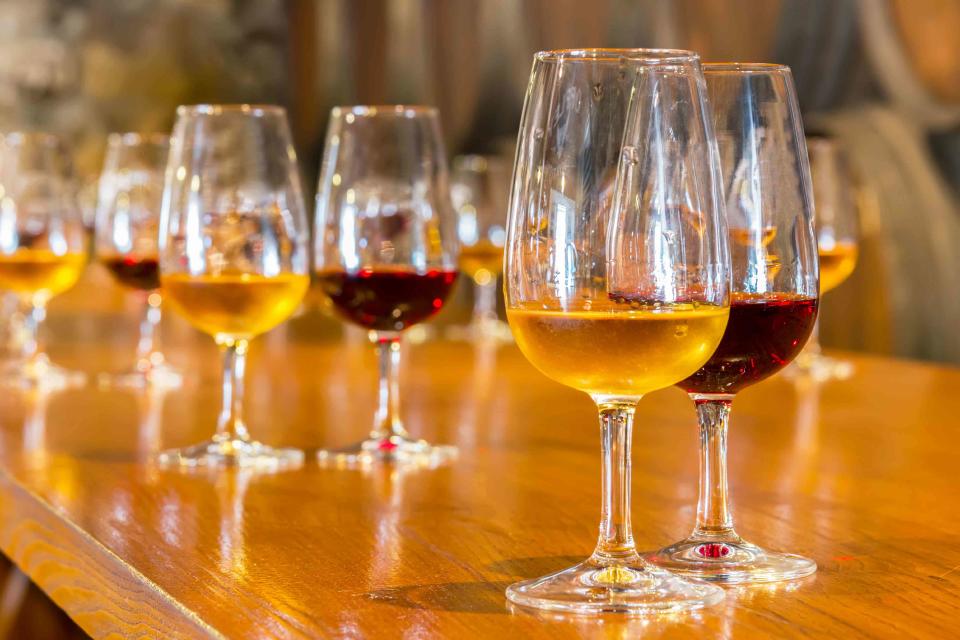How to Tell the Difference Between Sherry and Port
Before you order one of these fortified wines, here's what to know.

Shutterstock
One of my favorite things to do at the end of a meal is to peruse the drinks section of the dessert menu. You know, the place at the very bottom of the little card where you’ll find espresso drinks and sweet cocktails that dare you to keep the night going, as well as gentler aperitifs and fortified wine. While I’ll often have a sense of what I’m in the mood for before I take a look, I’ll never miss an opportunity to chat with the sommelier about what they’re excited about.
“When considering an after-dinner beverage, not only are flavor profiles taken into consideration, but the entire journey of the meal,” says Catherine Fanelli, wine director at Al Coro, an Italian restaurant in New York City that features a truly noteworthy five-course pasta tasting menu. “A person who has mainly had cocktails with their meal likely won't be interested in any sweet wine with dessert. However, someone who has sought out an off-the-beaten-path wine or something with significant age will likely be more open to an interesting Sauternes, grappa, or aged Madeira,” Fanelli explains.
When it comes to choosing between port and sherry — two mainstays I personally enjoy for after-dinner sipping — there are a few nuances to consider before you commit one way or another.
What is port wine?
Port is a type of fortified wine from Portugal’s Douro Valley. “Ruby ports are aged in large oak barrels, which allows this style to keep its vivid, youthful color and fruity flavors since it has minimal contact with the oak and oxygen. Ruby ports average at and close to 20% ABV,” writes Food & Wine contributor Gabrielle Nicole Pharms. Tawny ports have a reddish-brown color (true to their name) and a lean, nutty flavor. A rarer style, white port typically has apple and stone fruit notes, followed by a similarly nutty, almond-like finish. White Port is often used as a cocktail ingredient in a classic Gin & Tonic or as an aperitif.
What is sherry?
Sherry is a type of fortified wine produced in Jerez, along the southern Andalucia coast of Spain. It is typically made with Palomino, though Pedro Ximenez and Moscatel grapes are sometimes used. Depending on the grapes used and how the wine is aged, sherry can be dry or sweet; Fino, Oloroso, Amontillado, and Manzanilla sherries are all styles of dry sherry, whereas sweet sherries typically made with Pedro Ximenez and Moscatel grapes bear the name of the varietal on the bottle.
What is the difference between port and sherry wine?
“A basic way to think about flavor differences is that Port is made mostly from red grapes and sherry is made from white grapes. For me, port is all about the dark spiced fruit tones and sometimes caramel toffee notes,” says Fanelli. “While port is defined by two main categories, Ruby and Tawny, the intricacies really come down to the aging process. While a port with age can be an incredible experience- and excellent to sip on or have with sweet desserts- for me, sherry is where things get a bit more interesting. The main styles of sherry all come down to the winemaking and aging process but it is much more influenced by nature.”
Fanelli personally finds sherry to be a bit more versatile and wide-ranging than port. “My favorite way to drink sherry is with some fresh seafood or even blended into a cocktail — try a sherry cobbler or bamboo!”
For more Food & Wine news, make sure to sign up for our newsletter!
Read the original article on Food & Wine.


